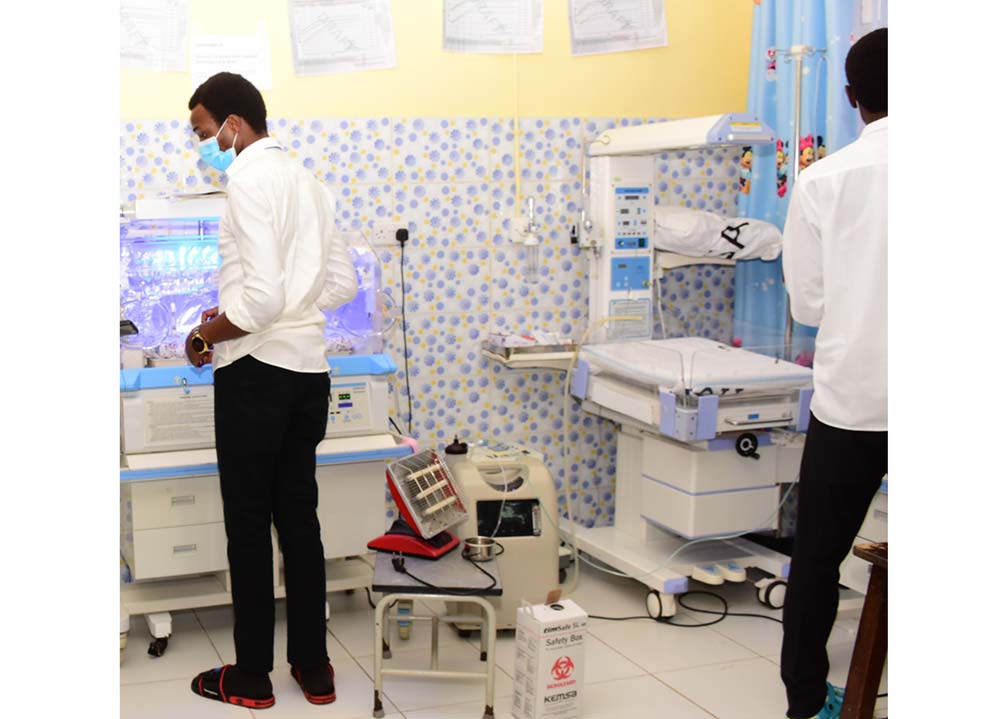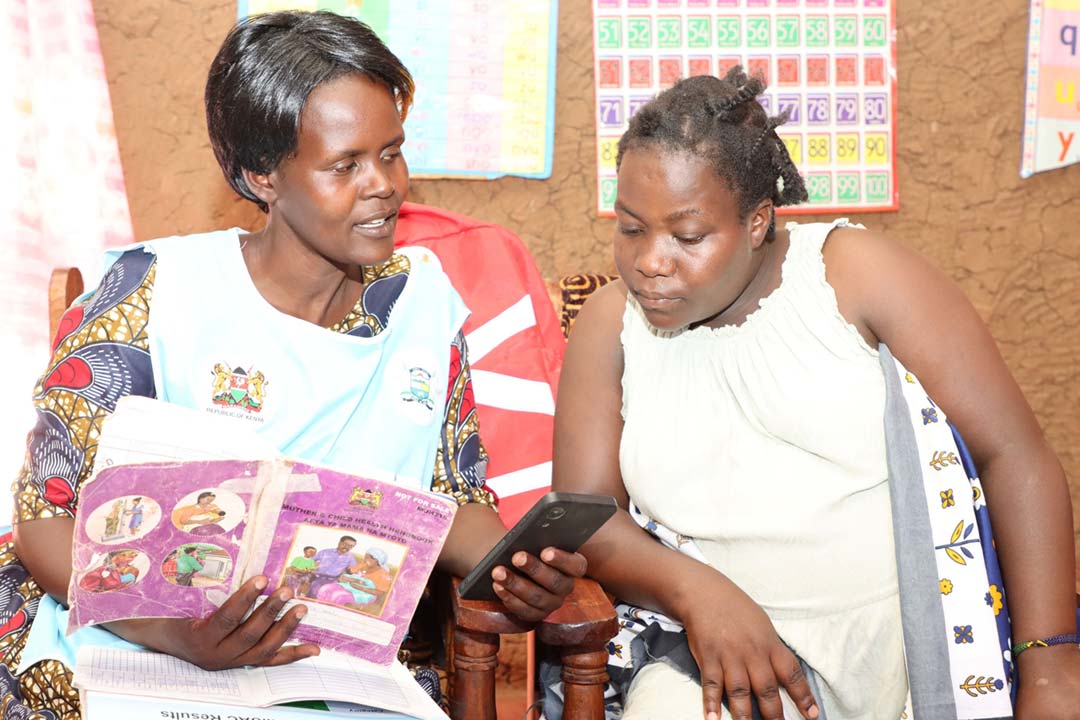Kenya steps up its war against drug-resistant tuberculosis
From rolling out child-friendly treatment options to trialling potential new vaccines, Kenya is coming at TB from multiple angles at once.
- 6 July 2023
- 7 min read
- by Joyce Chimbi

It started in early 2022, with a feeling of general body weakness and sickness, then came the weight loss, fever and night sweats that alarmed Laura Amollo. Several visits to health centres in the Eastlands area of Nairobi left both patient and health workers puzzled.
At Kenyatta National Hospital that June, however, Amollo finally got her diagnosis: this was multidrug-resistant tuberculosis, a difficult-to-treat form of TB that is resistant to first-line anti-TB medications.
“Not only are we targeting both adults and children through clinical trials, but also, we are prospecting for home-grown treatment options from natural product sources."
– Dr Sospeter Njeru, KEMRI
"Memories of my cousin receiving one injection and 18 pills a day, every single day without fail, for more than one year, with some frightening side effects like her eyes and skin turning yellow, left me so shocked that I fainted. I could not survive the treatment. I was inconsolable. That is when the nurse told me that things have changed," says the Nairobi-based school teacher.
Amollo was immediately put on an injectable-free treatment regimen for drug-resistant TB disease, a combination of highly effective and patient-friendly orally ingested drugs.
Kenya has in recent years made strides in TB management – progress from which Amollo was benefitting. The introduction of new digital chest X-ray machines are aimed at helping reach the more than 40% of people with TB who do not get diagnosed, for instance. In July 2022, the Ministry of Health launched the TB Innovative Technologies Tools Project (iNTP) for TB screening, diagnosis and prevention to escalate efforts towards eliminating TB by 2030. Those innovations, along with improved treatments like the one Amollo received, helped push Kenya off its unenviable rung on the global list of the 30 highest-burden multi-drug (MDR) or Rifampicin Resistant-TB countries in 2021.
Prior to 2021, Kenya was one of 14 countries globally with a place on all three lists of high-burden countries for TB, TB/HIV and MDR-TB. Today, Kenya remains retains a position only on the list of the 30 high TB burden countries in the world.
TB is caused by bacteria, which become airborne and spread when a person with untreated TB sneezes or coughs. An ancient killer, TB remains among Kenya's top four leading causes of death among communicable, maternal, neonatal and nutritional diseases. More than 120,000 people develop TB every year and children account for 10–11% of all TB cases. In 2020, TB accounted for 3.2% of all deaths, per Kenya's Ministry of Health estimates.
But as two clinical trials for new preventive products enter their third phase, a new weapon in the fight against TB is in sight. The Kenya Medical Research Institute (KEMRI), through its Centre for Respiratory Diseases Research (CRDR), is working on two groundbreaking TB vaccines for both adults and children.
More than 1,500 participants in Nairobi and Siaya Counties are enrolled in a BCG recombinant Phase III vaccines trial for infants. Another Phase III clinical trial for a vaccine intended for adolescents and adults is also underway.
KEMRI was selected by the Bill and Melinda Gates Medical Research Institute (Gates MRI) to conduct the M72 adult TB Vaccine Phase 3 Trial. The trial includes more than 10,000 people in different parts of the world. The M72 vaccine is expected to help prevent TB-infected individuals from progressing to active infection, or the transition from infection with TB bacteria to contagious TB disease. Trials so far have shown great promise.
"Tuberculosis has been the leading cause of mortalities from a single infectious agent long before COVID-19, and is now the second leading cause of death. One challenge with tubercular infection is the fact that it causes manipulation of the host (human) immunological defence mechanisms to foster its survival," says Dr Sospeter Njeru, from KEMRI.
He says that it is this manipulation of the host immunological defence mechanisms that has made it difficult to develop a TB vaccine. But scientists appear to be on track to break the longstanding stalemate with the killer infection.
"Not only are we targeting both adults and children through clinical trials, but also, we are prospecting for home-grown treatment options from natural product sources, or NPS, in combination with conventional drugs, with the hope of improving on efficacy and reducing on toxicity of available conventional therapeutic options," Dr Njeru explains.
In 2016, Kenya became the first country to adopt child-friendly TB medicine, bringing an end to a what had previously been a difficult child TB treatment journey – one Mary Agatha Wanjira recalls only too well.
Wanjira's first encounter with tuberculosis was in 2015, when her two-year-old grandson was diagnosed with the silent killer. The diagnosis was serious. The child was malnourished and at a high risk of developing tuberculosis (TB) meningitis, blindness, deafness or intellectual disability due to a weak immune system, Wanjira was told.
Have you read?
"The nurse gave us many different pills which I would crush together with a spoon to produce a bitter-tasting powder. Every day, for six long months, we would forcefully open his mouth and close it to prevent him from spitting it out. More recently, in 2019, the child's mother was receiving injections daily at Mbagathi hospital to treat TB for very many months," she says from her grocery shop in Sokoni village, Kawangware, an informal settlement in Nairobi.
Where Wanjira had to crush multiple pills to fashion the correct dosage, child-friendly TB drugs now come ready-made in correct dosages, in fewer pills. Moreover, they are flavoured to taste better, and dissolve in water. All of these improvements have significantly improved drug adherence in children.
By harnessing advances in the pharmaceutical and diagnostic technologies to combat TB from many angles at once, Kenya is charting a course for other high TB-burden countries, and more so those like Mongolia, Nepal and Zambia, which have only recently joined the list of 30 high multi-drug/RR-TB burden countries.
KEMRI has already reduced the standard TB treatment period from 18 to six months and research is underway that could enable that treatment window to shrink down to four months. A three-month Tuberculosis Preventive Treatment regimen is available for free in government health facilities to protect caregivers from family members infected with TB.

Credit: Joyce Chimbi.
Children in the care of TB-infected persons are at particularly high risk of being infected and developing severe and often fatal forms, including TB meningitis and miliary TB, since babies and young children have less-developed immune systems. The World Health Organization recommends that household members in contact with TB patients receive preventive therapy.
"Kenya is winning the battle against TB from inside the laboratories and in hospitals where TB treatment is free in all government health facilities. The greatest problem are the myths, misconceptions and stigma around TB because they are still keeping patients away from health care," says Mark Oloo Otieno, a clinician at Mbagathi hospital, Nairobi.
"People generally associate TB with HIV because TB is indeed an AIDS-defining disease. HIV/TB coinfection is a major challenge in Kenya today, but TB is also a disease in itself and we are all one cough, sneeze or breath away from catching TB. It is not a disease of the poor."
He adds that at Mbagathi hospital, health providers cater to a large population from low-income settlements like the neighbouring Kibra informal settlement, as well as people from middle-income backgrounds.
“Kenya is winning the battle against TB from inside the laboratories and in hospitals where TB treatment is free in all government health facilities. The greatest problem are the myths, misconceptions and stigma around TB because they are still keeping patients away from health care.”
– Mark Oloo Otieno, clinician at Mbagathi hospital
The doctor stresses that there is no difference in terms of TB prevalence between the two socio-economic groups. However, certain underlying health conditions, like malnutrition in children and infants, do increase vulnerability to falling ill with TB.
Oloo says that people are still traumatised by the history of TB treatment in Kenya. For many, especially those suffering drug resistant TB from 2006 and early 2020, it was often a long, painful and lonely journey, requiring multiple injections for 18 months. Today, an oral and highly effective drug regimen is available for such patients, and no injections are required.
Catherine Nyambura, a community health assistant affiliated to Pumwani hospital speaks of the complementary role that digital technology features are playing in improving adherence to TB treatment and reducing fatalities.
She gives the example of a digital technology feature that was launched four months ago in Nairobi and Mombasa counties and indicates that at least 2,000 patients in nearly 200 government facilities are now enrolled into the programem.
The technology is toll-free and works on all mobile phone types, including basic feature phones. Patients send a code every time they take a pill and when they fail to, they receive a message alerting them to take medicine.
Nyambura says there is a need for a sustained mass campaign to spread the word that TB is deadly and that the help people need to save themselves is free, available and accessible in all government health facilities.
More from Joyce Chimbi
Recommended for you








